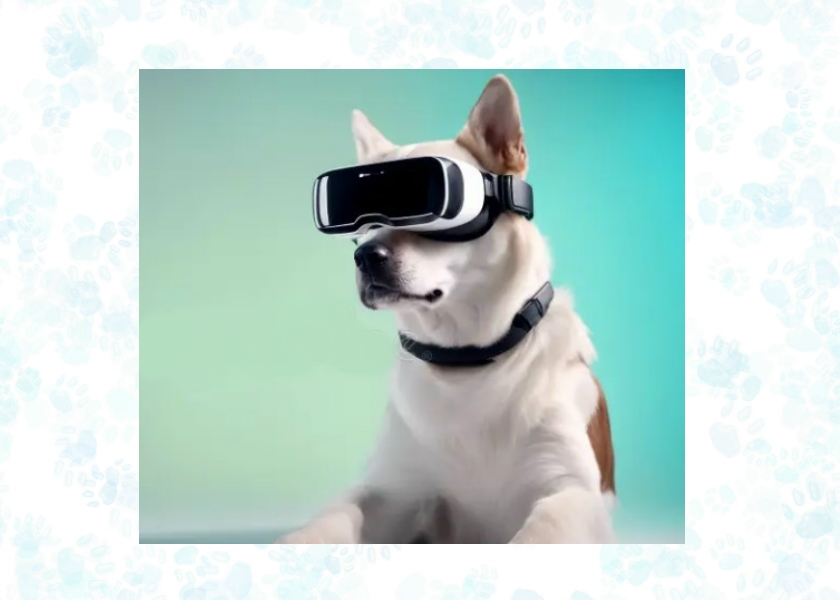Last Updated on 07/08/2025 by Liza Brits

Augmented Reality for Pets – A New Digital Frontier
Technology has revolutionized nearly every aspect of human life—from how we work and communicate to how we entertain ourselves. Now, it’s starting to reshape the world of pets. One of the most intriguing innovations on the horizon is augmented reality for pets—a concept that once sounded like science fiction but is quickly gaining traction.
While AR has already transformed industries like gaming and social networking for people, it’s now being adapted to enrich the lives of our furry companions. But is this next-gen tech a groundbreaking leap forward in pet care, or just another fleeting trend?
Let’s dig deeper into what AR for pets really looks like, and whether it has the potential to become the future of pet entertainment.
What Is Augmented Reality for Pets?
Augmented reality blends the digital and physical worlds, layering computer-generated elements over a real environment. In the pet world, this translates to interactive experiences designed specifically for animals, delivered through smart devices like:
- Interactive projections that display moving objects like dots, bugs, or fish onto walls and floors—ideal for chasing or stalking.
- Smart collars and AR glasses that offer visual or auditory cues, combining enrichment with training.
- Pet-friendly apps that turn tablets and smart displays into digital playgrounds for cats and dogs.
These tools aim to mimic natural stimuli, offering pets an engaging, dynamic environment that responds to their behavior.
Benefits of Augmented Reality in Pet Entertainment
🧠 Mental Stimulation
AR-based experiences provide more variety than static toys, stimulating pets’ brains with changing visuals and unpredictable movement. A virtual butterfly that darts around a room or a reactive fish on a screen can mimic prey, triggering a pet’s natural instincts.
🏃♀️ Physical Exercise
For pets—especially indoor cats or dogs without much yard space—AR can promote physical activity. It encourages movement, chasing, jumping, and interaction, helping to reduce obesity and improve overall health.
🎮 Personalized Play
AR systems can be tailored to each pet’s breed, energy level, and preferences. A lazy cat might prefer slow-moving fish, while a high-energy dog may respond better to fast-paced, fetch-like games with virtual balls.
🐾 Human-Pet Bonding
Some AR experiences are designed to involve both owner and pet—such as co-op training modules or play sessions controlled by humans—strengthening bonds through shared engagement.
Challenges and Concerns
As exciting as AR for pets sounds, there are several potential downsides that need to be addressed:
❓ Understanding Virtual Stimuli
Not all pets will grasp or react to digital objects. Developers must design experiences that are intuitive and align with natural animal behaviors, ensuring accessibility for different species and temperaments.
⚠️ Safety Risks
There’s a risk of overstimulation, disorientation, or even injury if pets interact too aggressively with virtual targets. Physical safety and emotional well-being should always be a priority in AR product development.
📱 Over-Reliance on Devices
Too much screen-based play can replace essential outdoor time, human interaction, and free play. Like with children and tech, moderation is key.
💸 Cost and Accessibility
Cutting-edge AR tech—especially wearables and smart home integration—can come with a steep price tag. Until prices drop, many pet owners may find it out of reach.
Current Innovations Leading the Way
Here are a few real-world examples where AR is already entering the pet space:
- AR Laser Toys – Some smart toys use motion sensors and AR to project moving dots or shapes across walls and floors, simulating prey.
- Wearable Smart Tech – Prototype AR glasses and smart collars are being developed for training, health monitoring, and immersive play.
- Tablet-Based Games – Developers are rolling out touch-sensitive apps with interactive fish tanks, birds, or bugs that pets can tap or paw at on screens.
These innovations represent just the beginning—more immersive, AI-driven solutions are on the way.
What’s Next? The Future of AR for Pets
The potential applications for AR in pet care go far beyond entertainment. Here are a few areas poised for growth:
🤖 AI-Driven Customization
Imagine AR games that adapt in real time to your pet’s mood, activity level, or behavior history. AI could fine-tune the experience to match your pet’s energy and personality.
🌐 Virtual Playdates
In the future, pets could interact with each other in virtual environments—perfect for social animals or pets living in remote areas.
🧘♂️ Therapeutic Uses
For anxious or aggressive pets, AR could provide controlled exposure therapy—introducing stimuli gradually and safely to reduce reactivity or fear-based behaviors.
Final Thoughts: Is AR the Future of Pet Entertainment?
Augmented reality is opening new doors in the way we care for and connect with our pets. With its ability to entertain, stimulate, and enrich, AR could play a major role in the future of pet ownership—especially as smart devices become more accessible.
That said, AR is a tool, not a replacement for love, attention, and outdoor adventure. It’s most powerful when used to complement traditional play, not replace it.
The bottom line? Augmented reality might not replace your pet’s favorite squeaky toy just yet—but it’s definitely worth watching.
PetSmartify is a participant in the Amazon Services LLC Associates Program and other affiliate programs. We may earn a small commission from purchases (at NO additional cost to you)
Product prices and availability are accurate as of the time of publication and are subject to change. Any price and availability information displayed on Amazon or any other retailer’s website at the time of purchase will apply.
